How to recognize apple variety by apple?
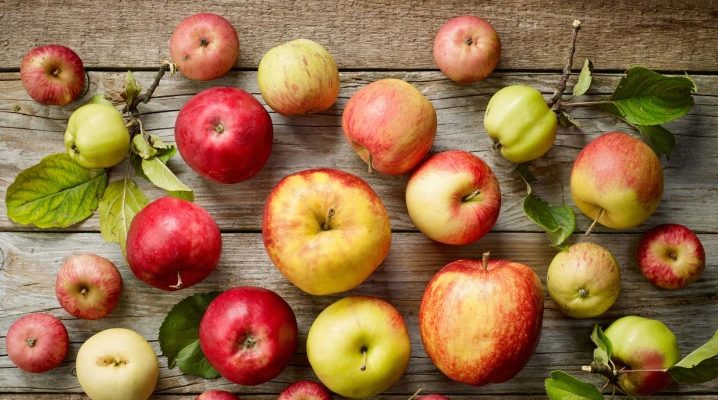
We don't often think about the types of fruit we eat. But imagine, for example, that some of your friends have apples growing in the garden, the taste and aroma of which you simply fell in love with and wanted to have a tree of the same variety on your own plot. Only bad luck - the owner himself does not know the variety of the plant. Or another situation: you have doubts about the conscientiousness of the seller from whom you once purchased the seedlings - the fruits do not meet your expectations.
The question arises as to whether it is possible to determine the apple variety by the appearance, the taste of its fruits. Let's try to figure it out.
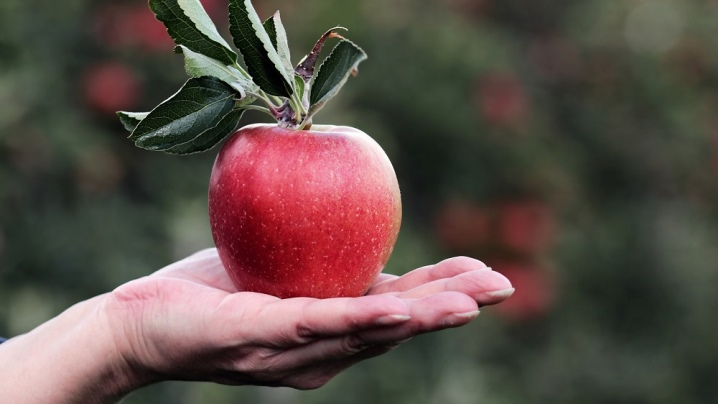
How to identify by form?
The fruit is the part of the plant that has the most distinctive characteristics of the variety. But, unfortunately, this does not mean that you can recognize the apple variety by apple with 100% certainty.
Indeed, even in two apple trees of the same variety, the fruits will be identical only if the conditions in which the tree developed completely coincide, and the fruits ripen.
And also the fruits are influenced by many factors that can change their properties: age, condition of the tree, crop load, weather, even from which part of the crown a particular apple was plucked.
However, this does not mean that all attempts to determine a plant variety by fruit should be discarded immediately.
By operating with a group of signs, you can select the most likely candidates, and this will greatly simplify the search. The first of these features is shape.
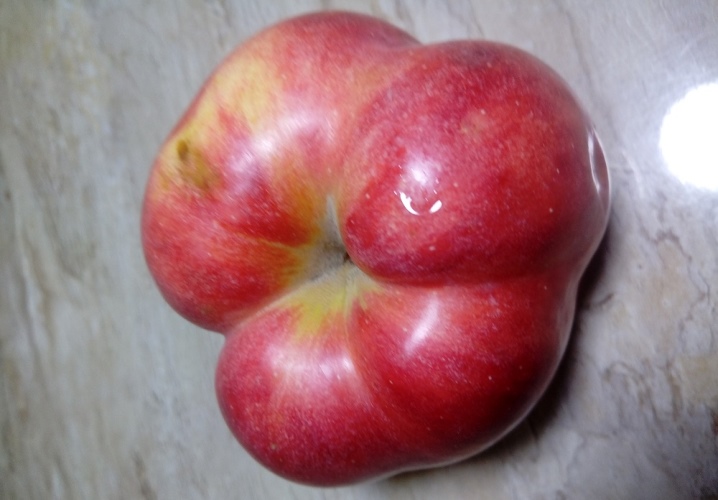
There are several varieties of apples in shape:
-
rounded - Quinti, Kutuzovets, Gala Mast;
-
flat-round - Medunitsa winter, April, Renoir, Antonovka;
-
flat - Anis scarlet and others;
-
cylindrical - Delelo, Renet Simirenko;
-
wide-cylindrical - Persian, Berdskoe, Favorite;
-
ovoid - White filling, Hornist;
-
rounded-conical - Cherry; Honey Crisp, Ligol, Cortland;
-
elongated-conical - Golden Resistant and others;
-
conical - Venyaminovskoe, Gala, Red Chief;
-
wide-conical - Renet Tatarsky and so on;
-
bell-shaped - Starkrimson.
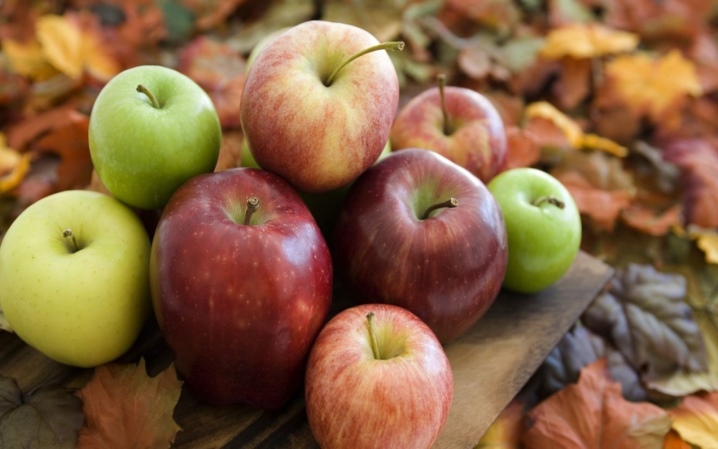
Further it is worth looking at the color of the fruit.
They may be:
-
red - Red Delicious, Spartan, Red Chief;
-
green - Granny Smith, Renet Simirenko, Antonovka;
-
yellow - Golden Delicious, Ainur.

Coloring can be solid, striped. Apples may have a blush. The texture of the skin differs - it can be matte or shiny, smooth or perceptibly rough.
Of course, the fruits of different varieties will also differ in size:
-
very large (from 175 g and more) - Pink lady, Geneva, Breburn;
-
large (125-175 g) - Glory to the winners, Richard, Gala, Renet Simirenko;
-
medium (75-100 g) - Quinti, Mantet, Macintosh, Cortland;
-
small (up to 25 g) - Moscow Grushovka, Dark red Kitayka, Helena.
But the “inner world” of apples is even more diverse.
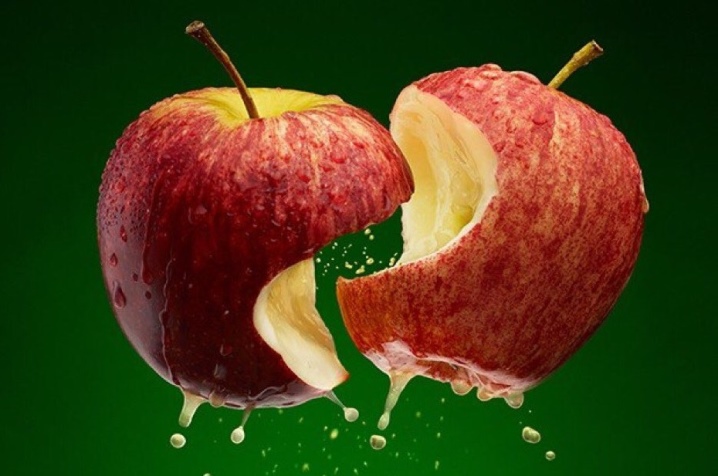
How to find out by the pulp?
The pulp of apples will vary in color, texture and, of course, flavor parameters.
For example, the flesh of apples of varieties Anis, Kortland, Grushovka Moskovskaya, Melba and Papirovka is white, Kvinti's is creamy, yellowish is at Antonovka, and greenish is at Medunitsa winter and Kutozovets. We should also mention rare apples with red pulp - these are the varieties of Vinerpo, Redlav Era, Baia Marisa.
By texture, the pulp can be:
-
loose - Papirovka, Moscow Grushovka, Borovinka;
-
tender - Glory to the winners, Bellefleur the Chinese, Macintosh, Renet Simirenko;
-
tough - Gala Shniga, Geneva Earley, Renet Chernenko.
The taste of apples is best judged at the moment when they are at the stage of consumer maturity. Granny Smith variety should have a distinct sourness, tart taste. Macintosh also tastes tart, but sweet. They are among the sweet Gala, Red Delicious, Fuji, Jonagold. But Golden Delicious is a sour variety.
Some varieties, such as Anis, Antonovka, are also easily recognizable by their characteristic, pleasant smell of pulp.
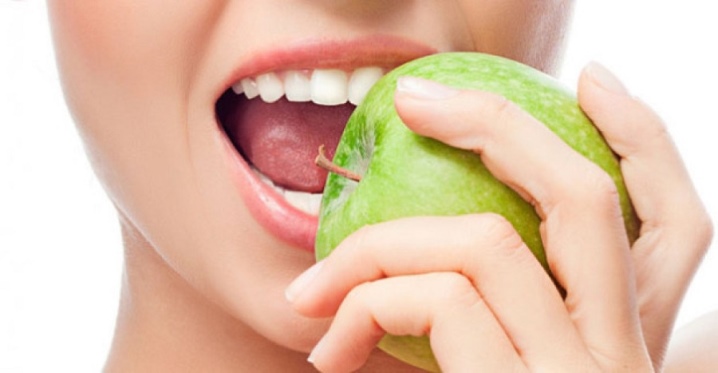
How to recognize by the ripening time?
Knowing the timing of ripening can make it a lot easier to identify a variety.
-
Summer varieties: Geneva Earley, White filling, Quinti, Melba, Summer striped.
-
Autumn varieties: Antonovka, Aport, Autumn striped.
-
Winter varieties: Baia Marisa, Spartan, Alva, Gloucester, Ruby, Liberty and others.
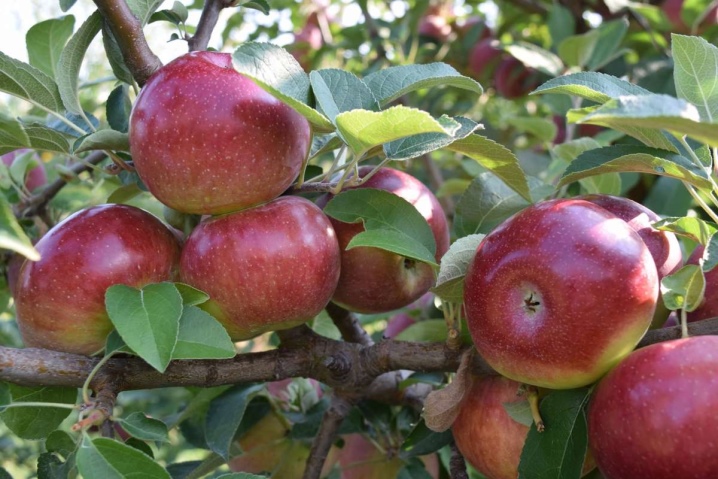
Differences on other grounds
The ways to distinguish an apple tree do not end there, but when trying to navigate the following, you need to either have a very keen eye, or be a gardener with great experience.
Funnel
The depression at the apple stalk may be distinct or barely noticeable. Some varieties (Antonovka, White filling, Papirovka, Magnitogorsk winter) have a characteristic pattern in this area, radiating from the stalk in rays.
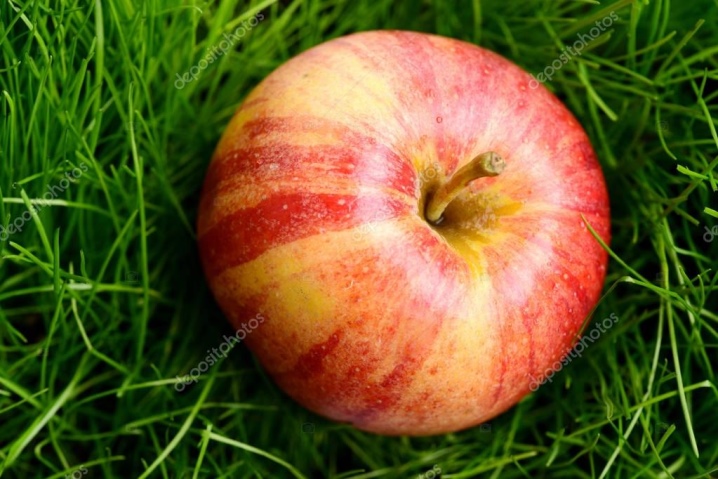
Peduncle
The stalks of apples of different varieties can differ significantly in length and thickness.
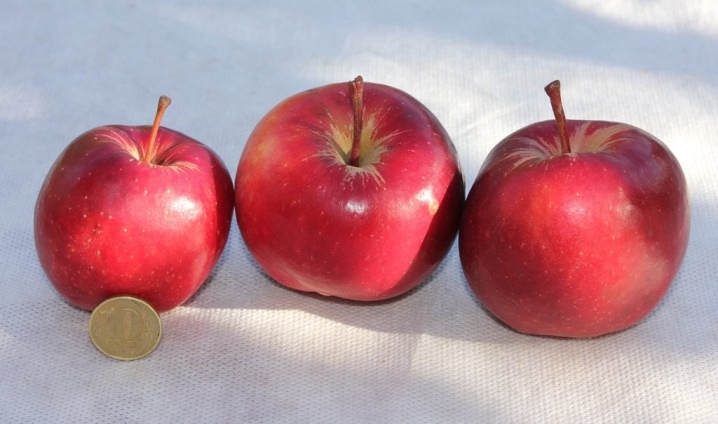
Calyx and seed nest
It is best to consider the side opposite to the funnel at a cut. Studying it, it is worth noting:
-
outlines of the subgacular cavity;
-
seed nest size;
-
the shape of the seeds.
You are especially fortunate if you can inspect a tree whose fruits interest you. True, in order to use its parameters to determine the variety, the tree must be healthy, not overloaded, not very old.
Pay attention to its height, the thickness of the branches, the angle of their departure, the shape, color and position of the leaves.
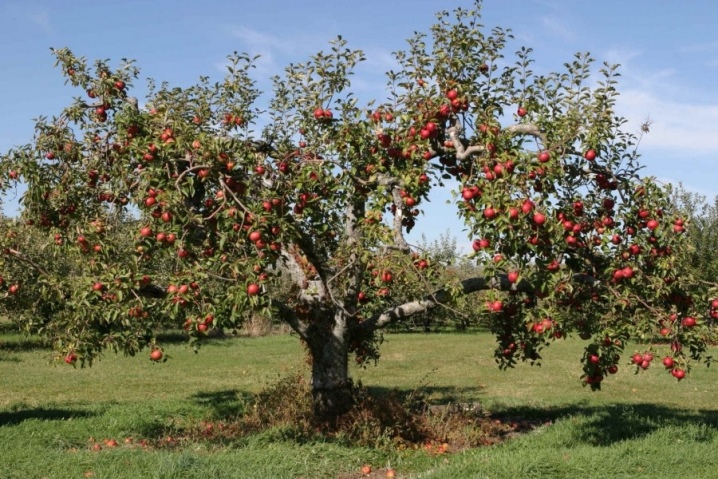
The bark of apple trees is different in color, it can have a grayish, yellowish or reddish tint.
Examine the crown carefully. Its shape in different varieties can be described as:
-
broom;
-
pyramidal (it is also cone-shaped);
-
spherical;
-
wide spreading;
-
wide-rounded;
-
wide-bellied.
According to the density of the crown, it can be dense, medium, rare.
For example, Avangard trees have an average height and an oblong rounded crown. The leaves of these apple trees are dark green. They wrinkle slightly, are lowered down. But at Cortland, the trees are tall, with gray-brown bark, a spreading crown and ovoid green leaves.
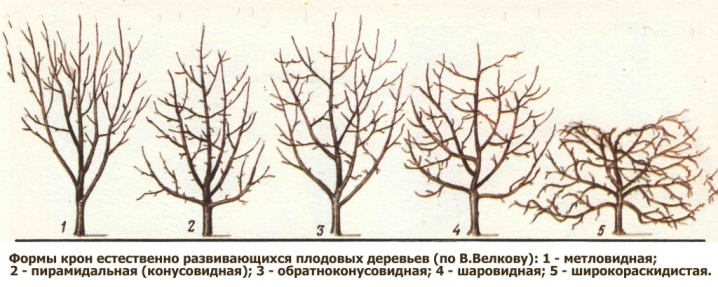
Thus, if you need to determine the apple variety, then you should remember a few fairly simple rules.
-
Do not assume that you can get a reliable result with just one apple.
-
Use the maximum possible number of criteria to determine the variety: the color and shape of the fruit, the shade of the pulp, taste, and more.
-
Proceed with the elimination method, gradually discarding varieties that do not look like the one you are looking for.
-
Do not try to identify the variety by stale or, conversely, unripe fruit.
-
If possible, inspect the apple tree itself - it is unlikely that it will be possible to determine the variety by fruits from an old, sick or overloaded tree.
-
Pay attention to the cut of the apple, its seeds.
-
Try to use fruits from the central part of the crown to determine the variety.
-
Use photographs, reference books with descriptions of varieties, it is simply impossible to remember everything.
-
Most likely, initially you will only narrow the range of searches, and will not find a specific variety.
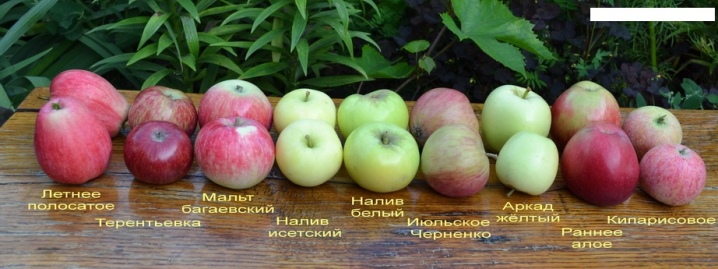
Let's try to figure it out with an example. You are holding a rather large green apple with an uneven color. We can immediately sweep aside small-fruited varieties, red and yellow apples. It is known that the apple was taken at the end of October. Its shape is rounded-conical, and, if you look closely, the fruit has small warty formations.
We cut the fruit. We are greeted by white pulp, tender, sweet. At this stage, you can already sweep away Granny Smith - there is no his trademark acidity, the flesh is not crispy, without a greenish tint. There is no yellowness inherent in Antonovka.
The tree from which the apple was plucked is tall. Its crown is broadly round, and its bark is dark gray with brown patches.
By comparing all the factors, you will narrow the list down to a few varieties. Among them, most likely, there will be Renet Simirenko, to whom this apple belonged.
Be careful, and your search will definitely be crowned with success.
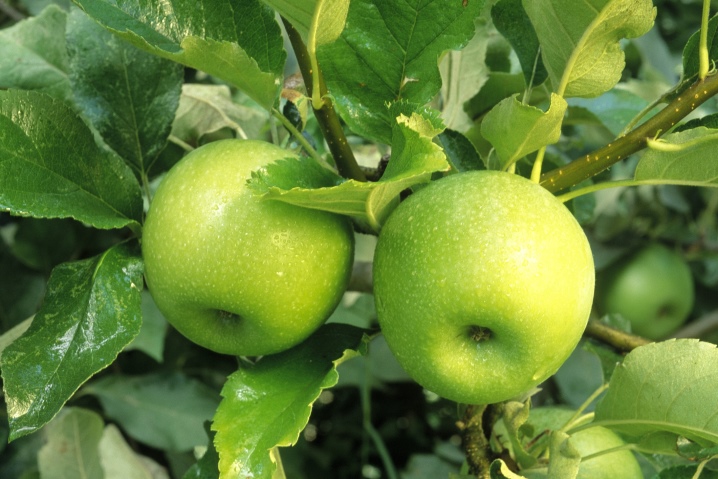













The comment was sent successfully.